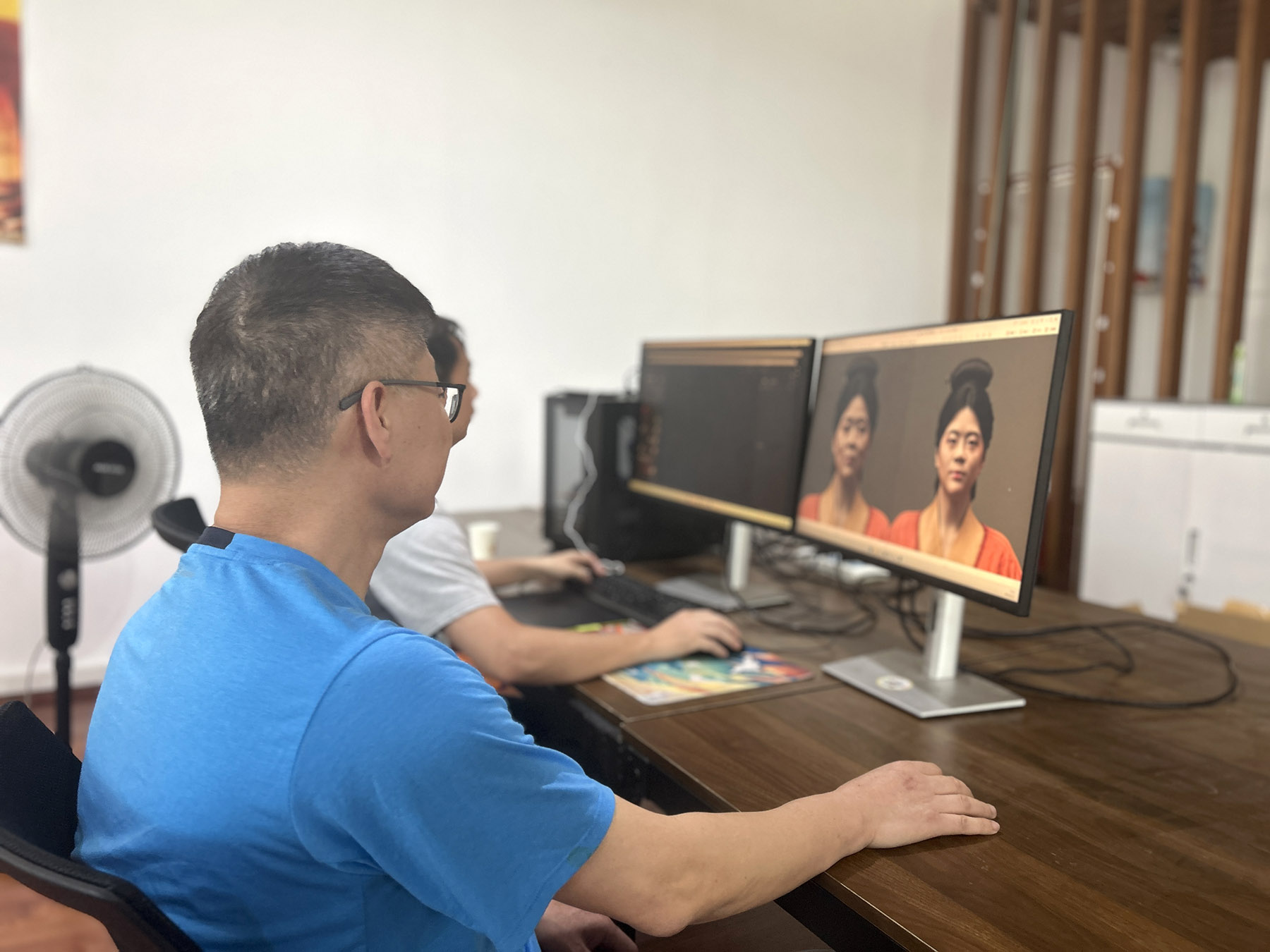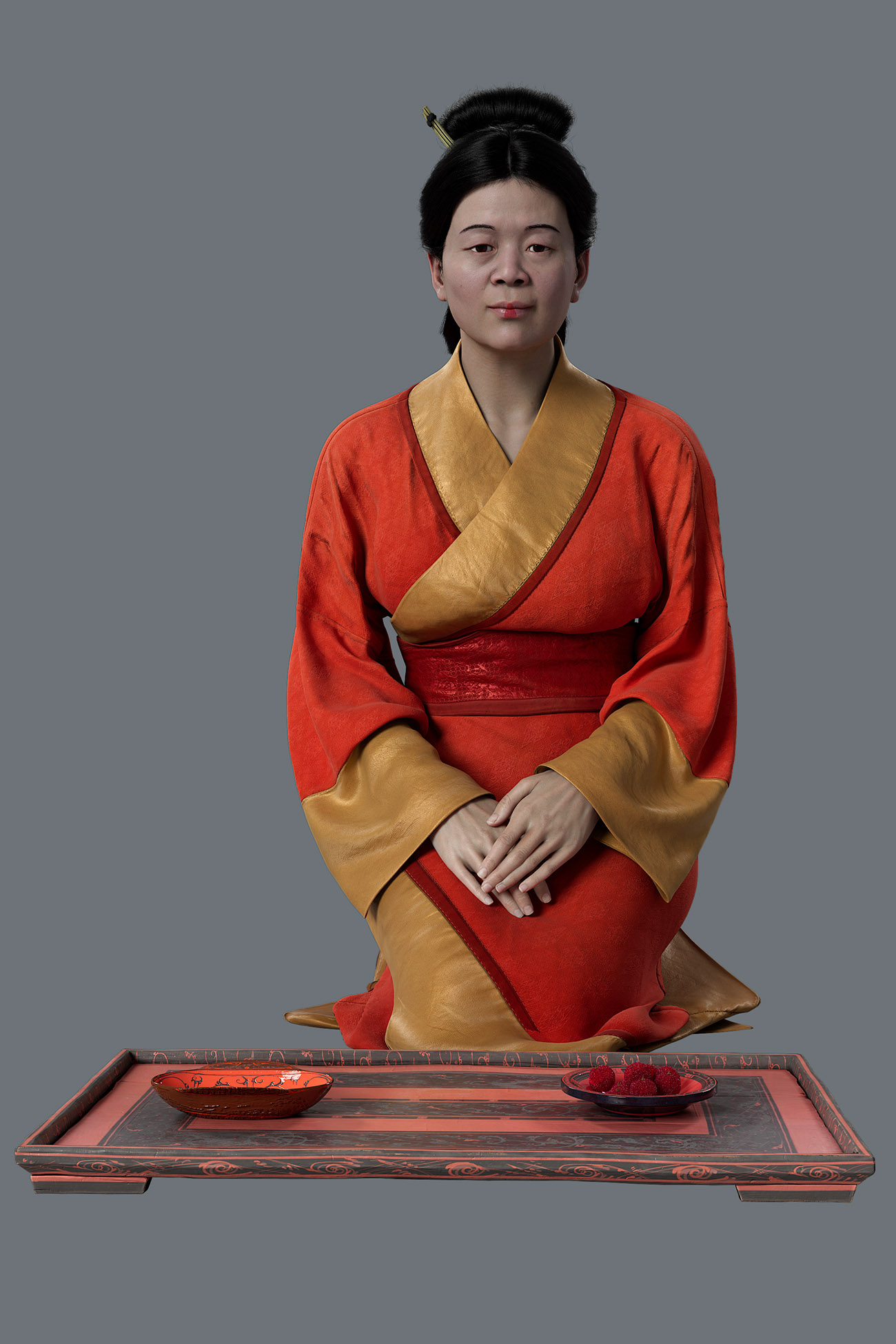
What did a noblewoman dating back more than 2,100 years look like? This enigmatic question was answered in dramatic fashion when Hunan Museum in Changsha, Hunan province, unveiled a 3D digital image of the human female remains recently, the longest-preserved "wet "human body ever found in China.
Xin Zhui, also called Lady Dai, was unearthed from a tomb at the Mawangdui site in 1972 in Changsha. The other two tombs discovered next to hers belonged to her husband Li Cang, the Marquis of Dai, and their son. More than 3,000 artifacts were also uncovered, making it one of the most significant archaeological discoveries of the 20th century in China.
When the noblewoman was discovered, her body was found to be intact and in a remarkable state of preservation.
Her skin remained moist, her subcutaneous soft tissue had retained its elasticity and some joints were still movable. Even her eyelashes were in place and the lines on her fingers and toes were discernible, leading to the estimation that she was about 50 years old when she died, says Duan Xiaoming, director of Hunan Museum.
READ MORE: Unveiling the past
Xin Zhui's face was swollen, deformed and decayed at the time of excavation, making it impossible to know her appearance when she was alive. The 3D digital version of Xin Zhui was based primarily on X-ray scans of her skull.
The museum released a full-body version of Xin Zhui in a seated position at 35 years old and a head image of her at 50 years old.
The digital project started last October. To protect Xin Zhui's body, experts did not directly handle it. Instead, they relied on close, multi-angled observations and measurements of the cadaver, practical experience, database sample comparisons, pathological examinations at the time of excavation and research on early Han Dynasty (206 BC-AD 220) makeup to infer her appearance, demeanor and other physical characteristics.

Additionally, they paid special attention to the image of the hunched Xin Zhui depicted in a T-shaped silk painting, which corresponded with lumbar disease symptoms found during the pathological examination of the body. The expert team completed the preliminary facial reconstruction in January of this year. Details of her hairstyle, headwear and clothing are yet to be refined.
Yuan Zhongbiao, a facial reconstruction expert involved in the digital version of Xin Zhui, says in terms of facial appearance, Xin Zhui was relatively ordinary and not the "noble beauty" expected by the public.
"Due to the diversity of facial features, there are similar types but no exact matches. We restored her appearance as accurately as possible," Yuan says.
After the release of Xin Zhui's digital image, some netizens raised doubts about the depiction, suggesting that the facial features of the marquise, particularly the nose, bear a striking resemblance to Yuan. They suspect that Yuan may have used his own face as a reference in the reconstruction of Xin Zhui's appearance.
ALSO READ: Discoveries enhancing our story
In early June, Hunan Museum stated that the digital representation of Xin Zhui has no connection to the face of Yuan, the reconstruction expert.
It was not the first time the museum has attempted to restore Xin Zhui's appearance. In 2002, it invited a professor of forensic medicine to reconstruct the facial images at four different ages — 7, 18, 30 and 50 years old. The next year, it unveiled a statue of Xin Zhui based on the painted images.
Explaining why the museum tried repeatedly to reconstruct the noblewoman's appearance, Zhang Xingguo, an assistant researcher at the Hunan Provincial Institute of Cultural Relics and Archaeology, says that chasing the truth about history is a key part of how humans move forward. "To get closer to what really happened, we need to use scientific methods," Zhang says.
In June, the digital rendition of Xin Zhui was showcased on large screens at a metro station in Changsha. Plans are underway for an interactive artificial intelligence-driven version of the marquise. Xin Zhui is anticipated to serve as a cultural relics interpreter and engage in real-time conversations with visitors.


